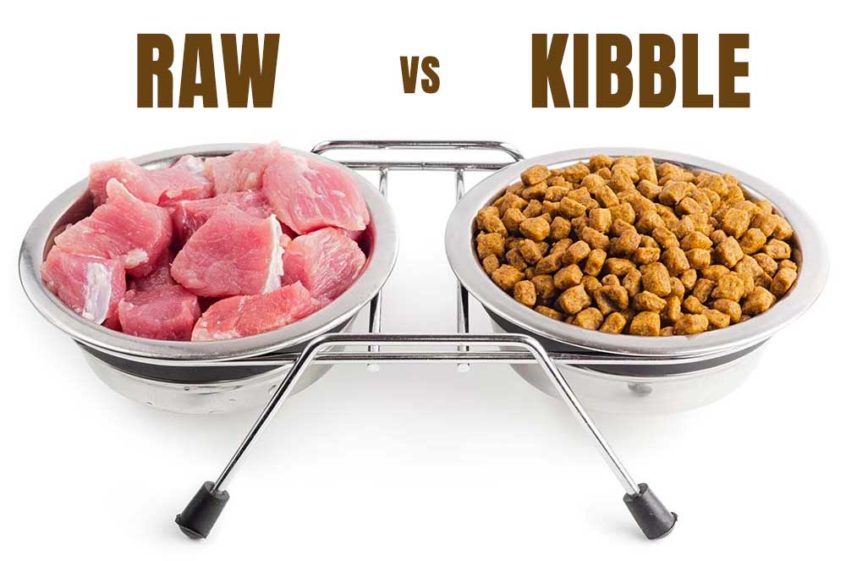How Pet Food Is Made Although feeding trials are no longer required for a food to meet the requirements for labeling a food “complete and balanced,” most manufacturers perform palatability studies when developing a new pet food. One set of animals is fed a new food while a “control” group is fed a current formula. The total volume eaten is … Read More
What’s Really In Pet Food (Part 6)
Dr. Randy L. Wysong is a veterinarian and produces his own line of pet foods. A long-time critic of pet food industry practices, he said, “Processing is the wild card in nutritional value that is, by and large, simply ignored. Heating, cooking, rendering, freezing, dehydrating, canning, extruding, pelleting, baking, and so forth, are so commonplace that they are simply thought … Read More
What’s Really In Pet Food (Part 7)
The National Research Council (NRC) of the Academy of Sciences set the nutritional standards for pet food that were used by the pet food industry until the late 1980s. The NRC standards, which still exist and are being revised as of 2001, were based on purified diets, and required feeding trials for pet foods claimed to be “complete” and “balanced.” … Read More
Chapter 3: Kibble Is Made For People With Wallets, Not Dogs
Reprinted from: http://www.dogsnaturallymagazine.com Hold on there. How did we get from “dogs are undeniably carnivores” to “keep on feeding them a grain based diet” in the same paragraph? What just happened there? Diabetes, a condition where the body is unable to properly metabolize glucose from carbohydrates, is the most common endocrine disease affecting dogs today and its prevalence is growing every … Read More
Chapter 2: …But Not To Vets
Reprinted from: http://www.dogsnaturallymagazine.com Hold on there. How did we get from “dogs are undeniably carnivores” to “keep on feeding them a grain based diet” in the same paragraph? What just happened there? Diabetes, a condition where the body is unable to properly metabolize glucose from carbohydrates, is the most common endocrine disease affecting dogs today and its prevalence is growing every … Read More
Chapter 5: Kick That Kibble to the Curb!
I recommend pet parents ditch dry food entirely and instead feed a nutritionally balanced, species-appropriate diet, which means food containing high-quality animal protein, moisture, healthy fats and fiber, with low to no starch content. A nutritionally balanced raw or gently cooked homemade diet is the top choice for pets, but you should only attempt this if you’re committed to doing it … Read More
Chapter 4: Additional Problems With Feeding Pets Kibble
Aside from poor-quality meats, byproducts and synthetic vitamins and minerals, most commercial dry pet foods are based on high-glycemic, genetically modified (GM) corn, wheat, rice or potato — grains and starches that have no place in your pet’s diet and create metabolically stressful insulin, glucagon and cortisol spikes throughout the day. In fact, many grain-free dry foods have a higher glycemic … Read More
Chapter 3: Why I Almost Never Recommend Dry Pet Food
While most kibble is formulated to meet the basic nutritional requirements of dogs and cats, it certainly doesn’t provide optimal nourishment for the long haul. I have several issues with dry pet food, but let’s start with the quality of the raw ingredients. Rendering plants create meat and bone meal from a variety of dubious sources, for example, parts of … Read More
Chapter 2: Daily Brushing Is the Best Way to Keep Your Pet’s Teeth Clean
With a gentle hand, patience and persistence, most pet parents can teach their dog or cat to submit to daily tooth brushing, which is the ideal way to insure tartar doesn’t form on tooth surfaces. One of the secrets to successful tooth brushing is to progress slowly and gently, allowing your pet to adapt at his own pace. Start with your finger … Read More
Chapter 5: So… What are the Facts?
Reprinted from: http://www.mercola.com Number one, carbohydrates are not a necessary component of a carnivore’s diet. Cats have no taste receptors for sweet flavors and have low rates of glucose uptake in the intestine. They should not be fed any type of grain that metabolizes into sugar. Cats have no salivary amylase to break down starches, either, and dogs have very low amylase secretion. … Read More



